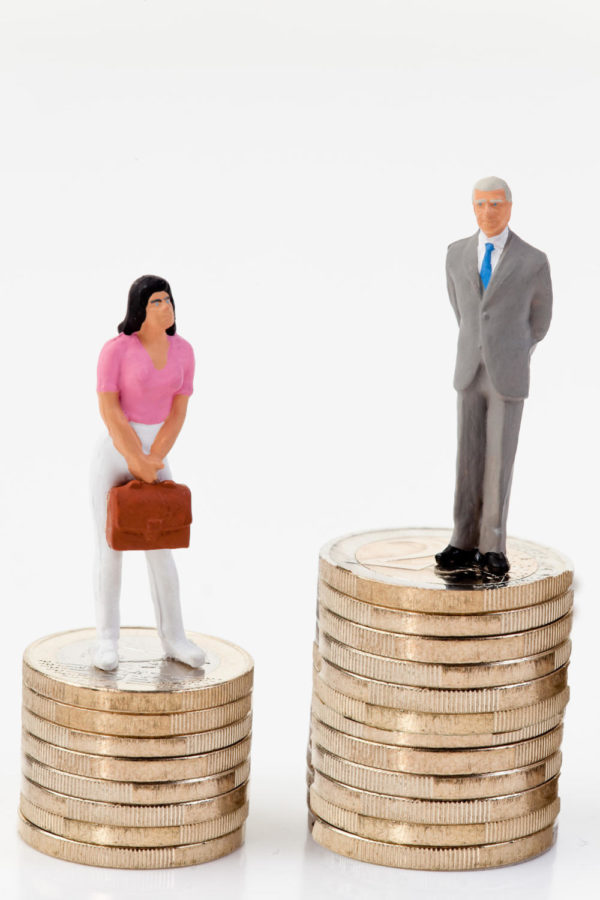Lawson: Gender wage discrimination is inexcusable
While the pay gap between genders is in decline since the 1970s, there is still a noticeable difference in wages of men and women.
April 4, 2017
Equal pay for equal work. That one sentence makes a great deal of sense if person A and person B have the same qualifications, same work experience and do the same job. It only makes sense that they are paid the same. This does not take into consideration merit pay. Strictly focusing on experience, qualifications and job, people who are equally matched should be paid the same amount for doing the same job.
Unfortunately, this is not the case for many women. The pay gap for women in the United States ranges from 90 percent to 78 percent depending on the ethnicity of the women compared to men in the Unites States, according to a 2013 survey.
Monday was national Equal Pay Day, which symbolizes how far into the year women must work to earn what men earned in the previous year. Due to its nature, the date changes year to year. This year, some retailers took the popular 20 percent difference in pay for men and women, and used that number to show their support for women to be paid equally.
The #20percentcounts has been trending on social media; businesses and consumers have been using the hashtag in their posts about equal pay day — bringing awareness to the injustice that has been accepted for far too long.
Lean In has partnered with businesses to start a promotional campaign where it offers 20 percent discounts on merchandise. The sale is designed to let people know that 20 percent does matter, and that equal pay should no longer be an issue. USA Today reported that an estimated 300 retailers are going to participate in the 20 percent counts campaign this year.
There are more women who live in poverty than men, and if women were compensated fairly, this number could drastically be cut. The fact that compensation levels vary for women of a different ethnicity compared to men is a huge slap in the face. More women lead households, more women make the majority of consumer purchases, and yet they are subject to gender based pricing, taxes on menstruation products and other ridiculous sources of inequality.
Women in this country are constantly being told that they they are “less than.” Women earn less than men, women have to pay more for everyday items, women’s health care services are being defunded, maternity leave is under attack and women’s reproductive rights are infringed upon by legislators who have zero business telling a woman what to do with her body.
We need to ask ourselves why we are so accustomed to undervaluing women, and why in 2017 we allow these behaviors to continue. Women are an integral part of society and should be treated as such. It may seem like a small thing, but starting with equal pay among the sexes is a great first step to getting us on equal ground.
The companies that have taken strong stances on equal pay believe that their employees who are equally matched should receive equal compensation or compensation that is equal to their qualifications.
The bottom line is that there should not have to be an equal pay day. Women and men are equals and should be treated as such in our society. The first step to making this a guarantee is to enforce the Equal Pay Act, which is already in place. There are too many employers who are not being punished for not following this law, and that is the first step to making pay inequality a thing of the past. We have to get this problem solved for our future generations of women.
















